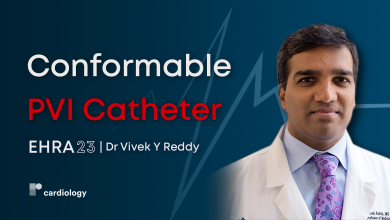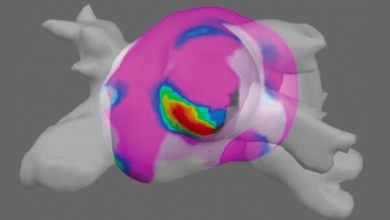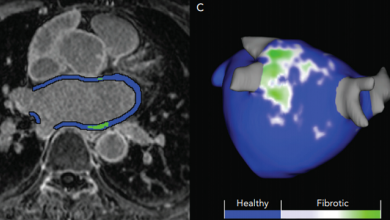Search results
Author(s):
Lluis Mont
,
Ivo Roca-Luque
,
Till F Althoff
Added:
2 years ago
Author(s):
Irum D Kotadia
,
Steven E Williams
,
Mark O’Neill
Added:
3 years ago
AF is the most common sustained cardiac arrhythmia and radiofrequency is the dominant energy source used for atrial ablation. Owing to an ageing population and the increasing burden of cardiovascular disease, the prevalence of AF, particularly in developed countries, is increasing.1,2 With increasing prevalence comes additional financial burden.3 It is paramount that AF therapy is effective in…
View more
Author(s):
Dipen Shah
Added:
3 years ago
Atrial fibrillation (AF) is the most common sustained cardiac arrhythmia, is associated with increased risk of stroke and heart failure and is a significant global health challenge.1 Pharmacological treatments to restore sinus rhythm in patients with AF are associated with a considerable relapse rate,2,3 whereas nonpharmacological interventions, such as catheter ablation procedures, which isolate…
View more
Author(s):
Henry Chubb
,
Steven E Williams
,
John Whitaker
,
et al
Added:
3 years ago
Interventional magnetic resonance imaging (MRI) is a growing field, and the strength of MRI guidance for procedures rests fundamentally in the high-contrast imaging of soft tissue structures. Combined with the avoidance of radiation exposure, the potential for functional assessment and the ability to exploit MR signals for calculation of the location of interventional instruments, it is clear…
View more
Author(s):
Vivek Reddy
Added:
1 year ago
EHRA 2023 — Dr Vivek Y Reddy (Mount Sinai Hospital, US) shares the details of a study looking at conformable PVI catheters for pulmonary vein isolation (PVI). The study investigates the use of a highly deformable mesh-like eight-french catheter that has recently received CE mark approval. The trial is ongoing at three centers.
Questions:
What's the research context or rationale?
Describe the…
View more
CIRCA-DOSE in Context
Author(s):
Jason G Andrade
,
Atul Verma
,
Laurent Macle
,
et al
Added:
3 years ago
Article
Author(s):
Stephen P Page
,
Mehul Dhinoja
Added:
3 years ago
Over the last 30 years, the role of catheter ablation for treating a wide range of arrhythmias has increased dramatically. The electrophysiological substrates of the more straightforward arrhythmias (such as atrio-ventricular reciprocating tachycardia and atrio-ventricular nodal re-entry tachycardia) have now been well defined and excellent long-term success rates can be achieved at minimal risk…
View more
Author(s):
Maya S Verma
,
Maria Terricabras
,
Atul Verma
Added:
2 years ago
CMR and AF Management
Author(s):
Yan Zhao
,
Lilas Dagher
,
Chao Huang
,
et al
Added:
3 years ago
Article
Author(s):
David Filgueiras-Rama
,
Jose L Merino
Added:
3 years ago
Atrial fibrillation (AF) is the most common sustained arrhythmia in the clinical practice.1 The prevalence of the arrhythmia is progressively increasing in developed countries and moreover, it is expected to affect up to 12 million people only in the US by 2050.2 Antiarrhythmic drugs continue to represent the first-line of treatment in AF patients, either to restore sinus rhythm or to prevent…
View more
















